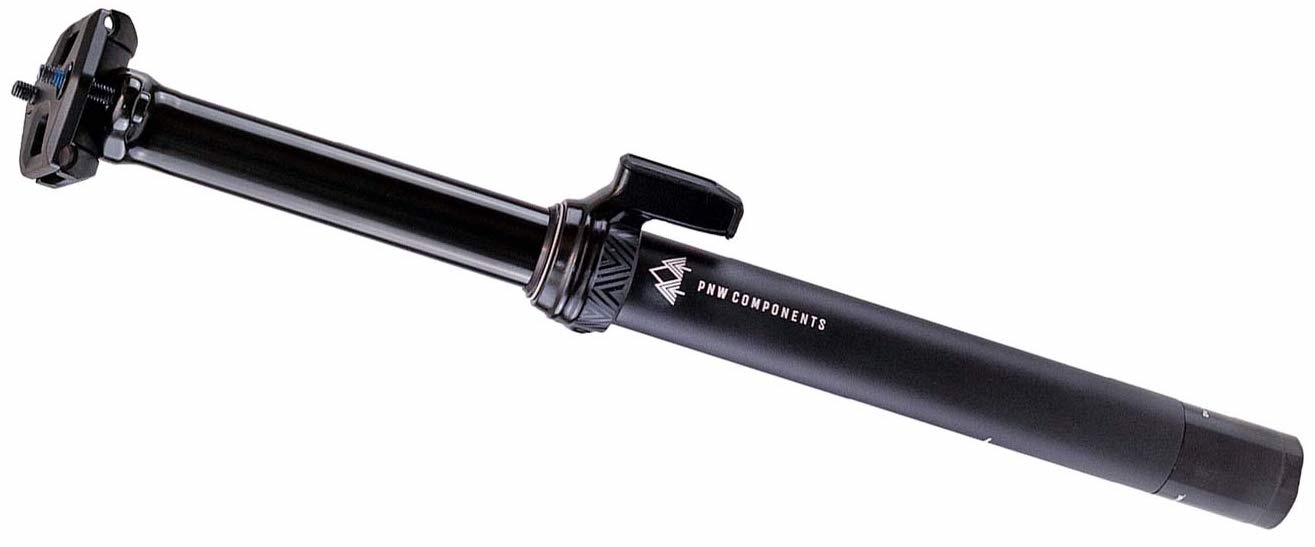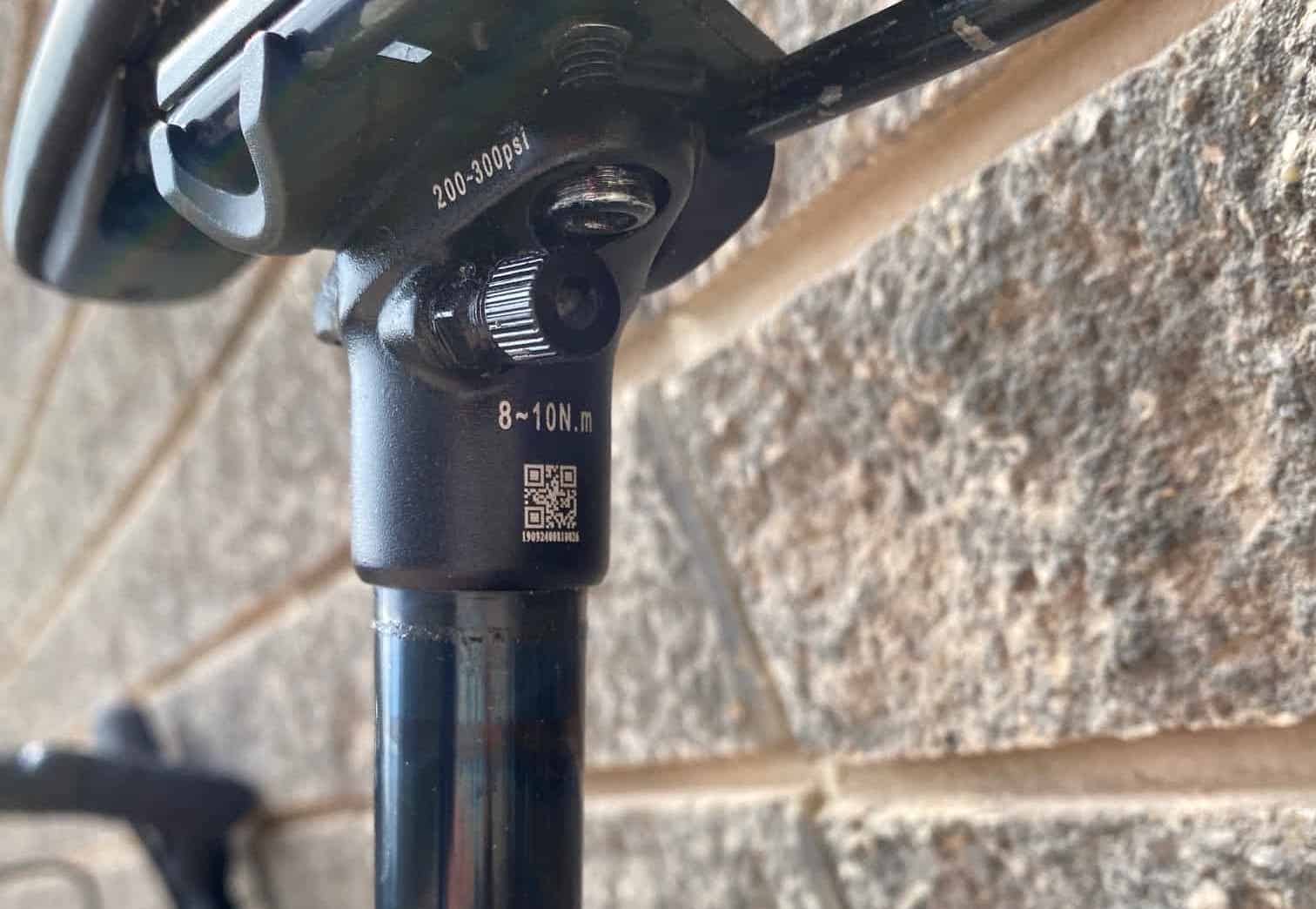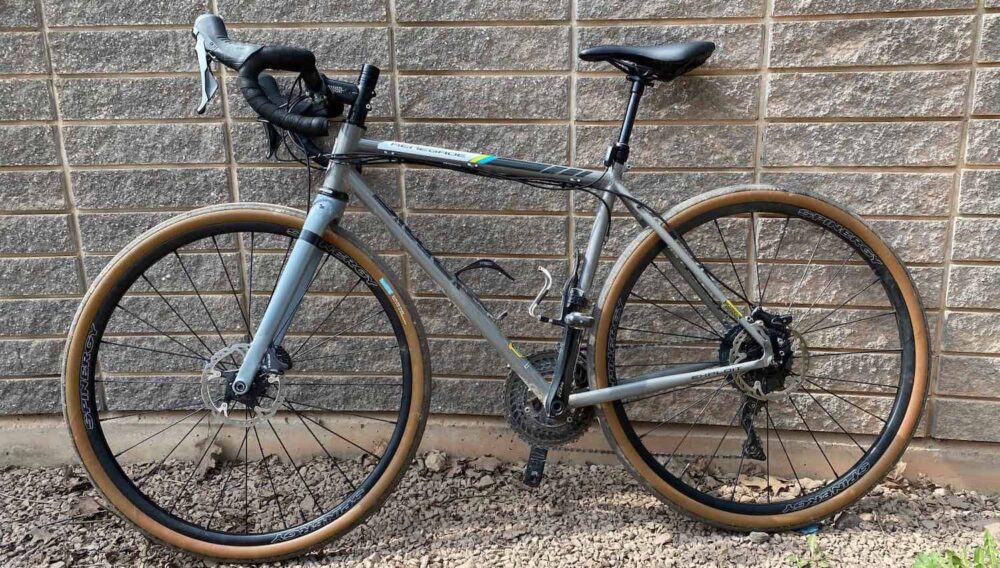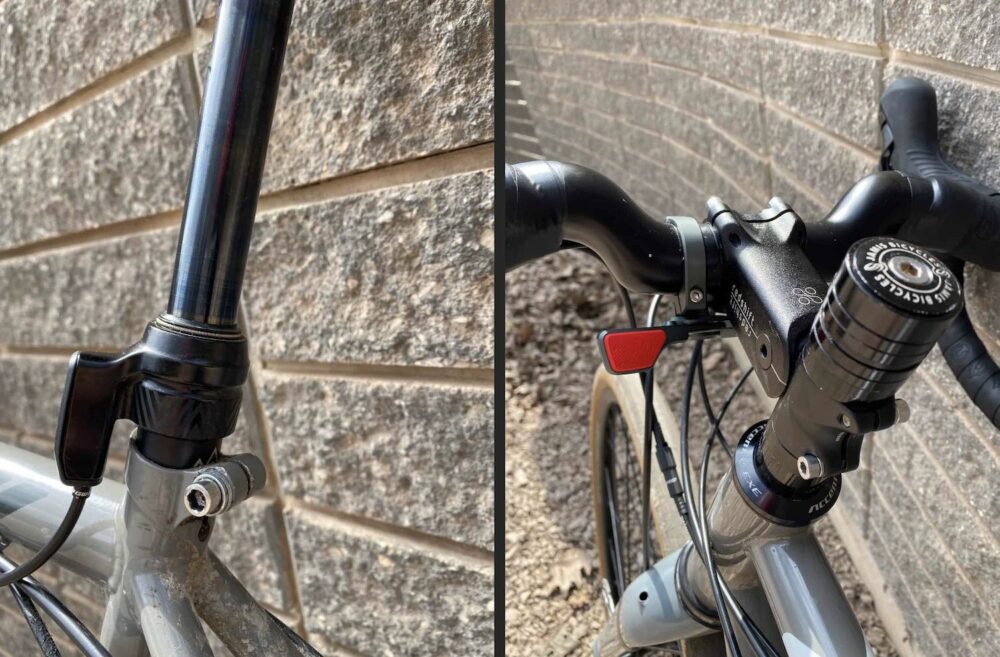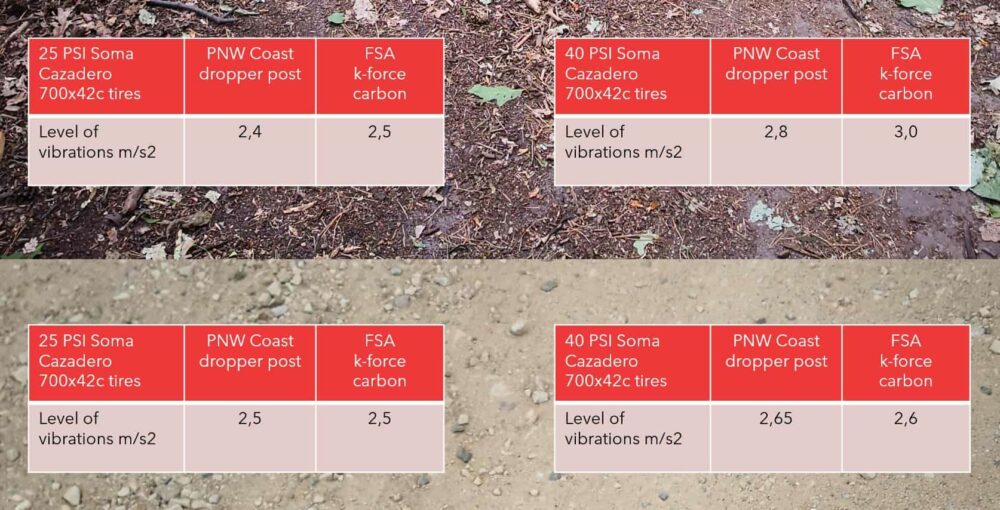I’ve tested many different suspension seatposts over the years, but this is the first time I’ve got my hands on a suspension seatpost that’s also a dropper post.
The PNW Coast is one of these rare examples (BySchulz D.2 is the other) and I was more than happy to give it a try on the gravel roads I ride.
PNW Coast Suspension Dropper Seatpost
The PNW Coast suspension dropper post will take the edge off big hits, improving your comfort.
US $189 (MSRP)
The PNW Coast dropper is the world’s first suspension dropper post, combining ride-smoothing suspension and the benefits of a dropper into one seat post.
This dropper is designed to improve the comfort of riders on all types of bikes, from bikepackers, to cross-country mountain bikers to weekday commuters.
Inside the PNW Coast is a hydraulic dual-chamber air cartridge with adjustable air pressure that provides up to 40mm of suspension travel.
You can buy an external or internal cable-routed variant with different kinds of remote levers (not included). The installation process is very simple, it took me no more than 10 minutes to set everything up.
I live near Warsaw so there are not that many places where I could benefit from this dropper post but I can’t wait to go to the mountains in summer to properly enjoy it.
Setting Up The PNW Coast Seatpost
The PNW Coast suspension dropper is the first product that I could not use right out of the box because you need a shock pump to properly set it up. After purchasing a shock pump, I started a similar process to other seatposts like the Redshift ShockStop Endurance – fine-tuning the spring rate.
PNW recommends the following air pressure for your weight:
50 to 75kg – 200 to 230psi
75 to 100kg – 230 to 260psi
100 to 125kg – 260 to 300psi
Following the PNW recommendation, I set up the air pressure at 260 PSI (84kg) and went for a ride.
I quickly discovered that 260 psi was simply too firm, so I dropped it to 220 psi. This time suspension was much more apparent but it also introduced some unwanted vertical movement (bouncing) when pedaling hard.
I ended with 230 psi, which was the best compromise between pedaling efficiency and suspension performance.
How Does The PNW Coast Feel To Ride?
The PNW Coast feels much less sophisticated than other suspension seatposts. The up-and-down movement is less enjoyable, as there is less polish in the movement itself.
While the Redshift ShockStop Endurance has a smooth, cushy feel, and PNW Coast is quite notchy. It moves harshly and stops the movement abruptly. It also does not rebound quickly enough when you encounter a quick succession of big hits.
For sure it works when you hit a big bump, but it is nowhere near the efficacy of a spring-based suspension seatpost.
But we have to remember something very important here. The PNW Coast is a dropper post with some cushioning. It’s not primarily a suspension seatpost. So really, it’s not quite fair to compare it with the best-in-class suspension seatposts like the Redshift ShockStop Endurance.
The other thing to note is that PNW Coast is designed to help you with big bumps and not high-frequency gravel chatter. It is never going to respond quickly enough to appropriately deal with high-speed chatter.
An odd thing that you might encounter is the side-to-side movement of the saddle (1-2 mm). I first thought that the saddle was not firmly attached, but I realized the seatpost itself had movement after re-tightening the main screw (it’s not noticeable once you sit on your saddle and start riding).
I reached out to PNW for an explanation, and they told me that they engineered this movement to ensure the post can remain active even when grit and grime build up over time.
Vibration Testing The PNW Coast
When comparing the vibrations you have to remember that the results are very much dependable on the air pressure that you set it up with. Less pressure results in more effective suspension performance, but at the same time, a more bouncy and irritating feel. You have to find what works for you.
For me, it was 230 psi as that was a spring rate that I could live with daily.
I conducted my vibration testing on my Jamis Renegade benchmark bike with Soma Cazadero 700C x 42mm tire set up at both 25 and 40 psi. The rigid seatpost was an FSA K-Force carbon.
The saddle that I used in all of the tests was a cheap Accent model so I could rule out some of the suspension effect that would come from the saddle itself.
Vibration Test Results
You can see my vibration measurement procedure & outdoor test courses HERE.
On the fast gravel road, the PNW Coast did not provide show any improvement over the rigid carbon seatpost (as expected). It was even slightly worse with 40 psi pressure in the tires.
On the slow bumpy forest trail, the difference was much more apparent. At 25 psi, the tires are doing most of the work but the PNW was 4% comfier than the rigid seatpost. At 40 psi the difference was bigger (almost 7%) but I have to add that it subjectively felt much better than the rigid seatpost.
As I said before, you can get better results by lowering the pressure in the air cartridge (15% fewer vibrations is possible) but this is at the cost of bounciness, which I did not want to have.
Summary
The PNW Coast suspension dropper post will take the edge off big hits, improving your comfort.
US $189 (MSRP)
The PNW Coast suspension dropper is a great product that will take the edge off big hits, improving your comfort. It’s easy to install and quite well-built.
But don’t expect any comfort miracles, my tests show a modest 4-7% improvement. I found it works well on bumpy forest trails but doesn’t yield an improvement on fast gravel roads.
The suspension movement is a bit harsh and nowhere near as smooth as something like the Redshift ShockStop Endurance. That said, we need to keep in mind it’s just a dropper with suspension, not a dedicated suspension seatpost.
Note: We may earn a commission when you purchase a PNW Coast seatpost through our links. This directly supports CYCLINGABOUT.com and allows us to continue to provide high-quality cycling information to you.


